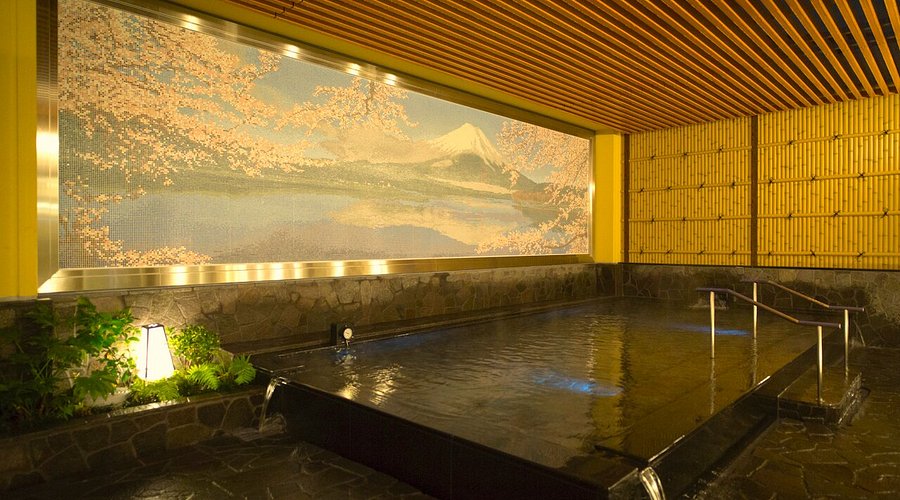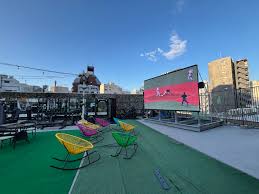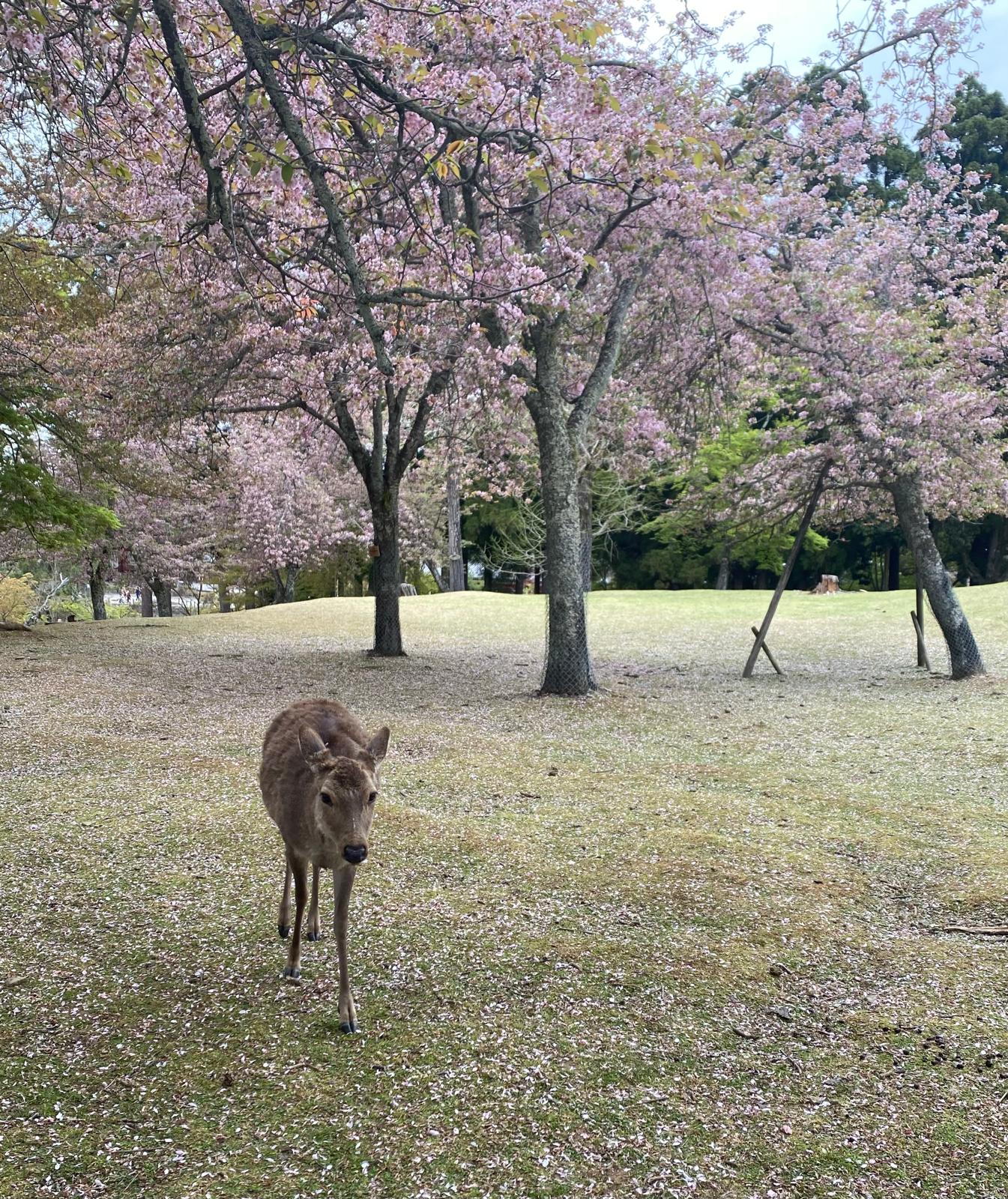Whenever I’m in Tokyo, there’s one place I never miss – even if I am only in town for a week: Thermae-Yu (1-1-2 Kabukicho), the enormous six-story hot spring complex hidden just a few steps from Shinjuku’s famous Golden Gai. This is actually Tokyo’s largest hot spring and it’s quite friendly to foreigners. It’s crazy how clean and calm Thermae-Yu is when you compare it to the flashing lights, noise, and energy of the tiny bars of its Golden neighbor or the izakayas of Kabukichō just down the street. Thermae-Yu is the perfect place to relax after the long flight to Tokyo or a long night out exploring the Shinjuku or Shibuya streets.
Please note: Affiliate links are used in this post. If you make a purchase, I earn a small commission at no cost to you, which goes toward the cost of maintaining this blog.
The Thermae-Yu Rules
The first thing you notice when you arrive is how organized everything is. The moment you walk in, you take off your shoes before stepping up to the raised entrance platform. This feels like a sacred boundary between the crowded Shinjuku streets and the inner calm of the onsen hot spring. You tuck your shoes into a small locker and keep the shoe key with you, Next, you head to reception.
One rule is non-negotiable: visible tattoos are not allowed, and you will see this sign even at the entrance. This policy comes from the traditional Japanese association of tattoos with the yakuza. Thermae-Yu is one of the more flexible establishments in Tokyo, but guests with large or visible tattoos are still often turned away. If you have only a small tattoo, you may be able to cover it discreetly with a waterproof bandage, which you can buy at a nearby pharmacy such as Matsumoto Kiyoshi. Some people get away with it, but if you’re caught without covering, you can be asked to leave immediately with no refund and no debate. It’s a rule worth respecting throughout your time in Japan.
At the reception desk, you tell the staff how long you plan to stay and whether you’d like access to the Terra Healing floor, the spa’s luxurious premium area that comes with an extra fee. If you say yes, you’ll receive not only your wrist-band key but also an additional set of comfortable shirt and pants specifically for that floor. The wrist-band is your digital wallet for the day. You can use it to buy food, drinks, or any services without ever pulling out your wallet. You will pay at the end, but based on whether you choose Terra Healing will determine what kind of clothing set you get at the next counter to the right and around the corner from reception.
The Ladies Changing Area on the Second Floor
Once you’ve checked in, you ascend to the second floor, where you can find the men’s and women’s changing areas. This is where the sense of peace will really start to wash over you. You’ll find rows of lockers for your clothes and belongings, vending machines for drinks, and areas designed for comfort and rest. The women’s section even includes a “Princess Area,” a softly lit space for sleeping or relaxing quietly behind the lockers, and there’s even a small coworking zone where laptop users can catch up on emails between baths. Seriously, is this place for real?
After you’ve changed into your spa robe or yukata, you leave your locker behind and step into another world – one where you wander from bath to bath, each one warmer or silkier than the next. This is where the world outside truly disappears.
Bathing Etiquette at Japan and Thermae-Yu
Once you are wearing your shirt and pant set, climb the stairs to the third floor and get ready to use a different locker and grab the smaller of the two brown towels that you’ve been given in your bag. The third floor is the main bathing level where Thermae-Yu’s natural hot springs flow daily from a source in Nakaizu Onsen, known as Jindai no Yu. The water is rich in sodium, calcium, and sulphate, with a gentle 42 °C temperature that eases fatigue and leaves your skin feeling impossibly smooth.

Quick Rundown of Japan Hot Spring Etiquette
If you didn’t already know, 95% of Japan’s hot springs are gender segregated and all of them are clothing-free. That’s right – you will not be wearing a bikini or any clothing whatsoever.
You cannot let any clothing or towels touch the water. Most people hold the smaller, rectangular towel just above their breasts and let it hang down to cover their pubic area, but many people just walk around naked as jaybirds, free as the moment they were born. When you do see the small towels, they are tied up around women’s heads, perfectly balanced to absorb sweat but always carefully balanced to NEVER touch the water.
Another thing to remember: you must wash your body with soap before getting into the big baths. You need to sit down on a stool like you see everyone else doing and wash your body (not necessarily your hair because your hair should also never touch the water). Some people choose to wash their hair before entering the bath. Some choose to wash their hair at the end. It’s up to you. You must wash again before you leave as well.
There are multiple indoor baths to choose from. There are three large indoor baths and others that have areas where you can lean back and enjoy jets pulsing into your back. There is also a small jacuzzi tub and a separate room that used to be a separate charge where you can bathe in a pink coral light bath that promises to give you the smoothest skin if you soak in it at the very end of your spa day. There’s a high-concentration carbonated bath where tiny bubbles cling to your skin like champagne fizz and even an open-air rotenburo enclosed by privacy walls that somehow still feels open to the Tokyo night sky. You can also rotate between a dry sauna, a mist sauna, and a cold plunge pool if you’re brave enough.
There are two actual bathtubs next to a steam sauna where you can rub mud over your body just like at the Blue Lagoon in Iceland or rub salt over your skin for a nice ex-foliation. Seriously, don’t miss this spot.
Also make sure to go outside and lay down on a smooth granite-like slab with just enough water below you to stay warm and know that you are supported and will not sink below. This is a common feature in a lot of onsens, and it is one of my favorite features. Make sure that you also soak in the rotenburo outdoor circular tub, another element of onsets that you will see throughout the country, I love feeling that chill on my skin while I soak in the hot water – so relaxing and good for your circulation. Just be sure that you are always respecting others and not talking loudly or even talking at all. See if you can go into your zen mode and let your thoughts swirl away like the water around you.
The Fourth Floor
When you’ve had your fill of soaking, soap down again at the stool area and then prepare to wear your Terra Healing clothes if you have paid for the service. Unlike the third floor with the baths, Terra Healing on the fifth floor requires you to be clothed and wear the pants and shirt you have been given. This is because you will be lying on hot rocks that you don’t want your skin to directly contact.
The fourth floor is a quieter, dimly lit relaxation area filled with recliners, reading chairs, and massage services. You can book a body scrub or a facial here, or simply curl up under a blanket and fall asleep. This is also the place to browse beauty treatments or enjoy aromatherapy. I have never used it because I didn’t want to pay for the service, but it is available if you want it. Isn’t this place just a paradise?
The Fifth Floor – Terra Healing, the Premium Experience
If you’ve opted for the upgrade (and I suggest that you do), the fifth floor is your reward. The Terra Healing area requires an additional fee, but the serenity it offers feels worth every yen.
This floor is quieter, more refined, and often softly scented with essential oils. It’s designed for deep rest: heated stone beds, meditation nooks, and gentle lighting that mimics sunset tones. There are four different sauna rooms including different themed bedrock baths (Ganban-yoku), which function like a low-temperature, full-body sauna experience. There is also a Finnish style dry sauna. Each sauna is at a different temperature and offers a unique experience. I usually bring a book for the main rooms, order a drink from the in-house juice bar, and lose track of time completely. This is where Thermae-Yu transcends the category of an ordinary onsen and becomes something closer to a luxury spa retreat.
The Sixth Floor and Rooftop
Above it all is the sixth floor, which leads to the rooftop and is only open in the warmer months of the year and not 24 hours (ask when you arrive). This is perhaps the most unexpected part of the complex. Few people imagine that an onsen in the middle of Shinjuku could have a rooftop deck, yet here it is complete with beach chairs, a trampoline, and even some gym equipment.
I’ve often spent an hour or more here, sipping a cold beer while the lights of the city shimmer below. It’s the perfect way to end a long evening, especially if you’ve just wandered through Golden Gai’s narrow alleys or spent the whole day walking your legs off in Tokyo. I also think that this could be a great date spot.

Eating at Thermae-Yu
Eventually, hunger strikes, and that’s when the basement floors call your name. Downstairs you’ll find several restaurants offering Japanese and Western dishes, all ordered with a simple tap of your bracelet. The convenience is seamless. You sit down, browse the menu, tap to confirm your meal, and the staff adds it to your tab automatically.
After hours in the baths, nothing tastes better than a steaming bowl of udon or a refreshing shaved-ice dessert. You never need to touch your wallet. It’s all taken care of when you check out at the end.
A Journey Through a Day at Thermae-Yu
Every visit follows the same rhythm for me, and it has become almost ritualistic. I might arrive around late afternoon after exploring Shinjuku. Once I’ve slipped off my shoes and received my wrist-band, I head upstairs to change. I shower thoroughly, then sink into the first bath, letting the mineral water wash away the city’s fatigue.
From there, I drift between hot and cold pools, sauna and rest zones, until I feel as if my entire body has exhaled. When I’ve had my fill, I climb up to the relaxation area for a short nap, wrapped in a blanket, before venturing up to the Terra Healing floor for some time laying on the cushioned body chairs before sweating on some hot rocks. As evening turns to night, I step out onto the rooftop terrace, the air cool against my freshly warmed skin.
A drink in hand, the hum of Tokyo below, I sit back in a beach chair and think, This might be the best place in the world to do absolutely nothing. When I finally get hungry, I ride the elevator down to the basement and order dinner with a tap of my bracelet, and eventually relax in one of the relaxation zones.
Why It’s Tokyo’s Best
Thermae-Yu is a winner because it combines the completeness of a true Japanese onsen with the convenience of a luxury hotel. Everything flows: the check-in process, the cleanliness, the utmost sense of relaxation, and the sheer number of things to do – and it’s open 24 hours a day. Few places in Tokyo offer such variety under one roof: a natural hot spring, six floors of services, rooftop bar, restaurants, co-working spaces, and even places to nap or work.
The staff are attentive without being intrusive, and the atmosphere shifts naturally throughout the day. Morning visits feel peaceful and rejuvenating, while late-night soaks after exploring Golden Gai feel almost cinematic, a quiet contrast to the chaotic streets outside.
Another reason I love it is accessibility. Many traditional onsens require long train rides to the countryside. At Thermae-Yu, you can step out of Shinjuku Station, walk ten minutes, and be soaking in natural mineral water within the hour. It’s the easiest way to experience the magic of a hot spring right in the heart of Japan’s biggest city.
The Price
The price can vary depending on how many extra services you add, but expect to pay around USD 40 to USD 50 per person for the experience including the Terra Healing for a maximum of 15 hours from 9:00am to midnight. As you can see here, there are additional fees for the weekend and the evenings. It will cost even more if you add in massage services and food.
A Few Final Tips
Go during the day if you want space to yourself; evenings tend to fill up with locals and travelers winding down. If you have tattoos, be proactive: cover them before you enter and make sure the edges are sealed so they don’t peel in the bath. If you plan to use the Terra Healing floor, let the staff know at check-in, as you’ll need the special clothing set.
Thermae-Yu is open late into the night, sometimes 24 hours, but extra fees may apply if you stay past midnight.
You will pay at the end when you return your basket, pay with a credit card, and then scan the QR code you receive to get past the ticket gate. Don’t forget to pick up your shoes from the locker and slowly, gently return from your trip to Tokyo’s largest hot spring back to the real world.
There Is One More Thermae-Yu!
If Shinjuku’s Golden Gai is far from your accommodation, you may want to try Thermae-Yu’s second location near Roppongi (1-7-2 Nishiazabu) Unlike Thermal-Yu’s Shinjuku location (which is Roman-themed), it has an Egyptian theme. I confess that I haven’t been yet, and I heard that is a bit smaller, but it strives to achieve the same standard of service as the original location. Be sure to check it out!
More Tours in Tokyo
Explore Go Kart Tour in Tokyo (Shibuya crossing~Harajuku~Shinjuku)



0 Comments